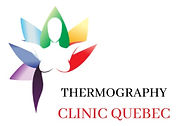
Non-Invasive Breast Thermography

Alexander
Mostovoy,
DHMS, BCCT
Board Certified
Clinical
Thermographer
Breast thermography measures the infrared radiation (heat) which is constantly radiating (emitting) away from the surface of the human skin. Skin as an organ breathes, exchanges gases with the environment, cools us as well as keeps us warm by letting heat out or keeping it in by controlling the amount of circulation, or blood flow, in the skin. This automatic regulation is done without conscious thought and is controlled by the autonomic nervous system via the sympathetics. The whole process is called thermoregulation.
The procedure is based on the principle that chemical and blood vessel activity in both pre-cancerous tissue and the area surrounding a developing breast cancer is almost always higher than in the normal breast. Since pre-cancerous and cancerous masses are highly metabolic tissues, they need an abundant supply of nutrients to maintain their growth. In order to do this they increase circulation to their cells by sending out chemicals to keep existing blood vessels open, recruit dormant vessels, and create new ones (neo-angiogenesis). This process results in an increase in regional surface temperatures of the breast.
Abnormal thermological patterns of the breast clearly demonstrate abnormal areas of heat. This gives the clinician an alert that something might be wrong with physiology of the breast. It could be an infection, inflammatory process, trauma or cancer.
Breast thermography uses no painful breast compression, no radiation and is non-invasive. It is an ideal tool for risk assessment not only for women over 40, but younger women as well. In our clinic, we have found breast abnormalities in women as young as 18 utilizing thermal imaging equipment. To deny the efficacy and of thermal imaging of the breast as an adjunctive assessment in the overall management of the patient is a grave error.
The procedure is both comfortable and safe using no radiation or compression. By carefully examining changes in the temperature and blood vessels of the breasts, signs of breast abnormalities may be detected years before a more serious problem develops. This provides for the earliest possible warning signal. Because of breast thermography's extreme sensitivity, these temperature variations and vascular changes may be among the earliest signs of breast disease and/or a pre-cancerous state of the breast.
Breast thermography has been researched for over 30 years, and over 800 peer-reviewed breast thermography studies exist in the index-medicus. In this data base well over 250,000 women have been included as study participants. Some of these studies have followed patients up to 12 years. Breast thermography has an average sensitivity and specificity of 90%.
Studies show that:
-
An abnormal infrared image is the single-most important marker of high risk for developing breast disease.
-
A persistent abnormal thermogram carries with it a 22 times higher risk of future breast disease.
-
When thermography is added to a woman's regular breast health checkup, a 61% increase in survival rate has been realized.
-
Finally, when used as part of a multimodal approach (clinical examination + mammography + thermography), 95% of early-stage cancers will be detected.
Breast thermography is not a stand-alone tool in the screening and diagnosis of breast cancer. It is adjunctive. We can not ignore the tremendous role of breast thermography as an early risk indicator or as a monitor of treatment. When a thermogram is positive, a closer look at the patient's diet, exposure to environmental pollution, toxins and lifestyle is in order. Clinical blood work in addition to ultrasound and mammography is essential. When mammography and blood work are negative or equivocal, thermographic monitoring on a quarterly to semi-annual basis should be performed in those patients with suspicious thermograms.
Changes in tumor angiogenesis can be evaluated and other procedures can be ordered to aid in the earliest possible diagnosis. Breast thermography is non-ionizing and safe and there is no reason to simply "wait and see" any longer. It is at this stage that a major decision must be made. We can no longer be passive but must become proactive with our health. The "wait and see' just because a mammogram is negative or equivocal is no longer acceptable. With a more universal non-political approach, thermal imaging can become a valuable early warning tool that is indispensable in patient's health care. Since it has been determined that 1 in 8 women will get breast cancer, we must use every means possible to detect cancers when there is the greatest chance for survival. Proper use of breast self-exams, physician exams, breast thermography, and mammography together provide the earliest detection system available to date. If treated in the earliest stages, cure rates greater than 95% are possible..

